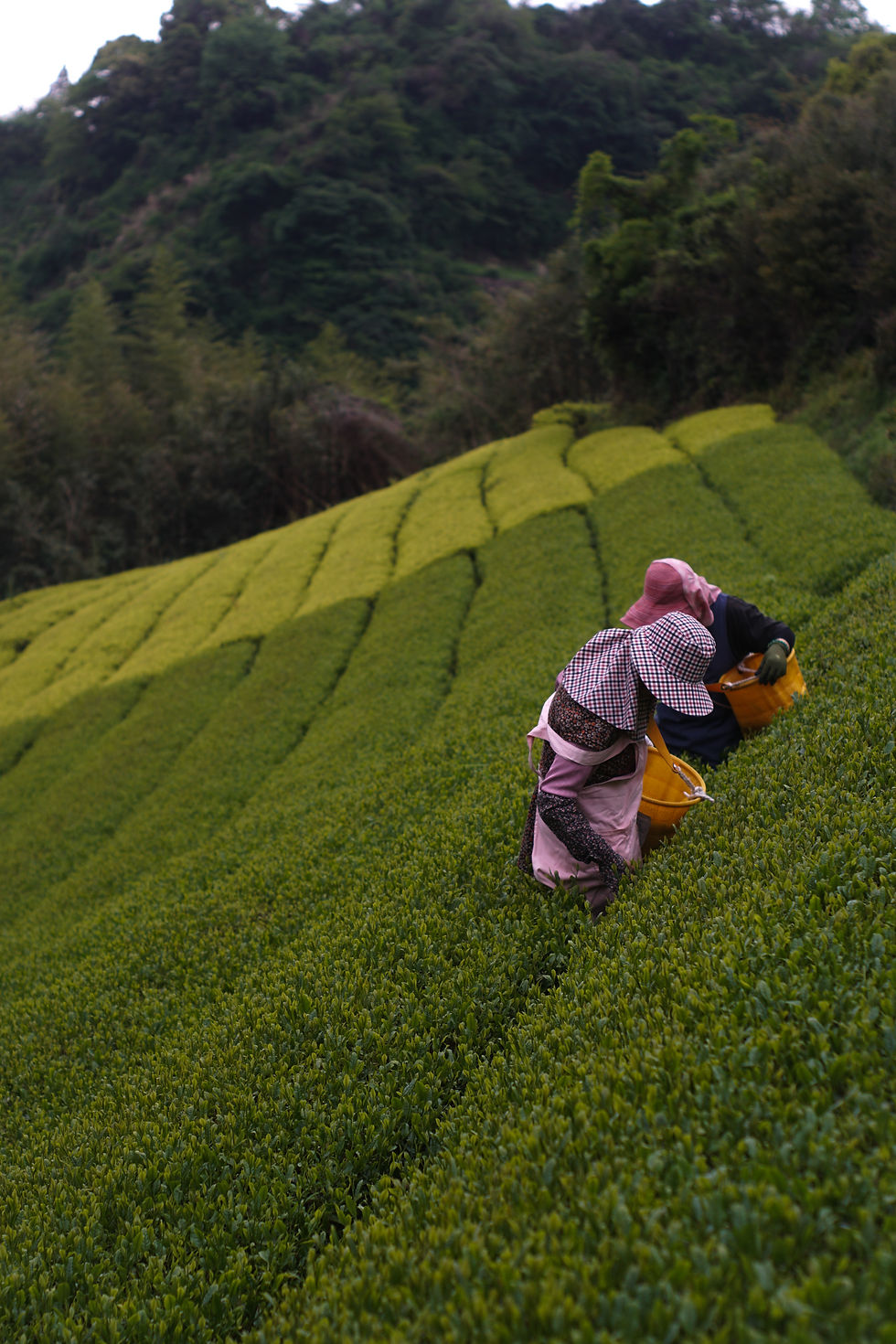KATAHIRA — Of Hands and Hills
- chanwenjian
- Mar 31
- 3 min read
Updated: 2 days ago
In the cool mountain air of Ryogochi, Shizuoka Prefecture, at 350 meters above sea level, a tea farm sits quietly among rolling hills and drifting morning mists. It’s here that Jiro Katahira, a seventh-generation tea farmer, carries on his family’s deep connection to this land — a connection that began not with tea, but with paper.
“My family was originally in the paper business,” Jiro explains as he walks between rows of tea bushes. “But when westernised production took over, my grandfather had to make a choice — so he turned these same hills into tea fields instead.”

Since then, the farm has stayed entirely family-run. Today, it’s just Jiro and his father, Yutaka, who tend the fields. There are no seasonal workers or hired pickers — every plant, every leaf is their responsibility. Jiro’s mother and wife handle the small shop next to the fields, greeting local customers who stop by to buy fresh green tea.
After a tour of the farm by Jiro, his mother warmly invited me to a tea ceremony in their guesthouse — starting with a delicate sencha, then carefully whisking a bowl of matcha. Her hands, lined and steady from years of work, moved with quiet precision — a simple ritual, yet full of the same care that shapes every leaf growing just outside the door.

Most days begin early. “When I wake up, I check the weather first thing. Then I look at the tea plants, one by one,” Jiro says. Each plant is inspected for moisture, signs of pests, or changes in leaf growth.
The farm's matcha comes from the Okuyutaka cultivar — a variety that demands careful attention to rainfall and temperature shifts. “Our plants grow right by the mountain spring,” Jiro says, gesturing toward the stream behind him. “If it’s dry, we’ll use that water — but if the rain is enough, we leave it to nature. The balance changes every year.”

One thing that never changes is the farm’s commitment to doing things by hand. The bushes are left to grow naturally — no machine trimming or aggressive pruning. Even the shades for matcha crop are built by hand by Jiro and his father. They structure it to hoover above the plants instead of directly draping over it, which preserves the quality and reduces damage to the crop. When it’s time to harvest, Jiro and Yutaka pick the tender leaves themselves. “Machines can’t choose the best leaf,” Jiro says with a laugh. “Hands can.”
Once picked, the leaves are steamed and dried, then carefully stone-ground to a fine powder. This slow, traditional method keeps the matcha’s bright green color and fresh aroma intact.
Respecting the land is just as important as preserving the craft. “If you push the land too hard, you lose it for the next generation,” Jiro says plainly. For him, expanding production for bigger profits is not worth risking the health of the plants or soil.
When asked what keeps him here, working these steep rows day after day, there's no hesitation. “I love tea. I love the land. I love the feeling when someone drinks what we made and says, ‘This is good.’ That’s enough for me.”

Standing on the hilltop, it is as though time stands still. The fields below rustle softly in the breeze, tended by the same hands that have shaped them for decades. In every sip of this matcha, you taste more than just tea — you taste the quiet commitment of a family that has made these mountains their life’s work.


